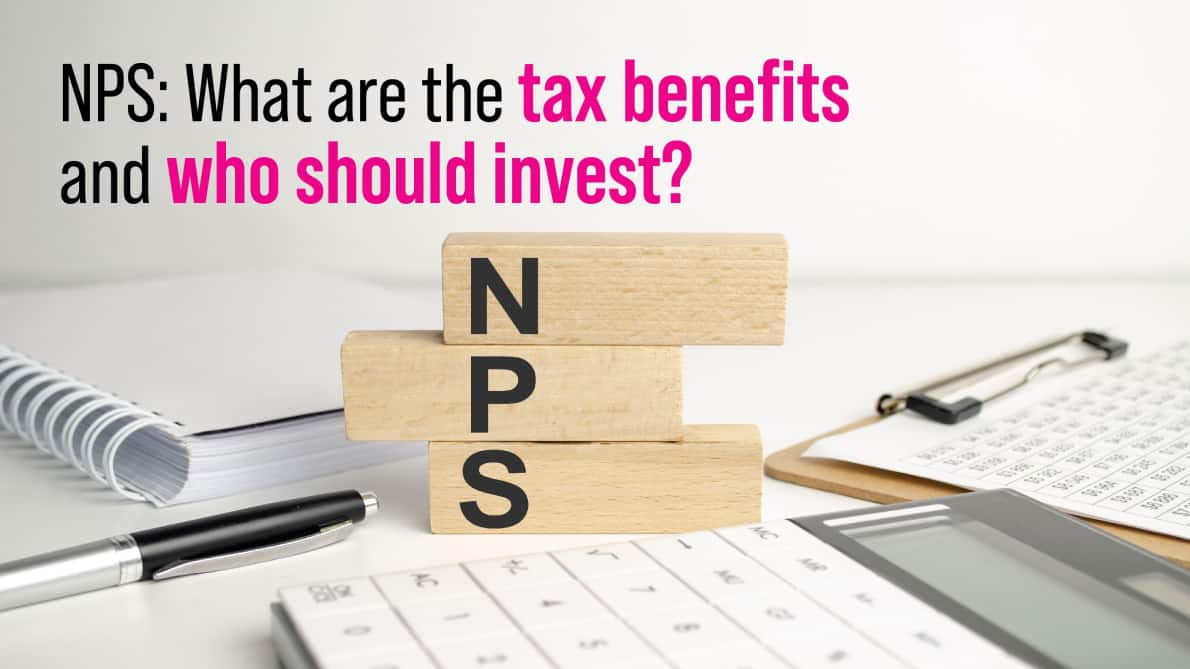Introduction-
NPS, stands for National Pension Scheme, stands as one of the options amongst women when it comes to securing their retirement, NPS. Designed to cater to employees across various sectors, NPS offers both, investment for retirement and tax savings, providing a dual advantage.
In this blog, let’s deep dive into the tax benefits associated with NPS, along with understanding who all should consider investing in it.
What is NPS?
The National Pension Scheme(NPS) is a government initiated pension cum investment scheme and is open to employees from public, private and even the unorganized sectors except for the armed forces. Managed by professional fund managers, the invested funds grow over time, providing a substantial retirement corpus. It is an attractive long-term saving avenue to effectively plan your retirement through investing in different asset classes available under NPS.
Upon retirement, a portion of the accumulated corpus can be withdrawn as lumpsum, while you get
the remaining as a steady pension income. Tax Benefits come as an inherent advantage with NPS.
Let’s first understand, what are the tax benefits women can avail of under NPS?
NPS enjoys the EEE tax status, meaning investments, interest earned and withdrawals are exempt from taxation.
Following are NPS tax benefits you get under the Old Tax Regime:-
- Tax Benefits under Section 80C- It is one of the listed investment options in which you can get NPS deduction by investing and saving tax under Section 80C. The deduction limit for this section is Rs. 1.5 lakhs
- Tax Benefits under Section 80CCD (1B)- This is an additional tax benefit given only to NPS investors. Under this section, you can claim an additional tax deduction for your investments up to Rs 50,0000 that is over and above the deduction under Section 80C.
So, you can claim a tax deduction of up to Rs 2 lakh by investing in NPS. - Tax Benefits under Section 80CCD (2)- This benefit can be availed on the contributions made by the employer, hence, this one is meant for the salaried individual and not self-employed. Government employees can claim 14 per cent of their salary tax deduction under this section. Meanwhile, for private-sector employees, it is capped at 10 percent of their salary.
- So, is NPS a tax saving option? Absolutely yes, as it helps you to save tax on your total taxable income.
Are these tax benefits available if we choose the New Tax Regime?
- If you opt for the New Tax Regime, please note that you won’t qualify for tax benefits offered by Section 80C. This also means that you won’t have access to tax benefits for NPS contributions u/s 80CCD(1) & 80CCD(1B) as they fall within the Section 80C limit.
- However, the employer’s contribution under section 80CCD(2) is still eligible for tax deduction under the new regime.
Who should consider investing in NPS?
NPS can be ideal for women who are looking for:
- A low-cost product
- Tax benefits for Self employed individuals and employees
- Market-linked returns
- Professional management by experienced Pension Fund Managers
- Investing for a long-term period considering NPS(Tier 1) has a lock-in and needs regular income during the post-retirement period
- Flexibility in terms of selecting an asset allocation
Let’s briefly understand eligibility, features and the types of accounts in NPS –
What is the eligibility criteria of NPS?
To join the National Pension Scheme, individuals must meet certain eligibility criteria.
- This scheme is open to all Indian citizens and non-resident Indians.
- Anyone between the age of 18 and 70 can enroll in this scheme.
- However, Persons of Indian Origin (PIOs) and Hindu Undivided Families (HUFs) are not eligible to subscribe to NPS.
What are the features of NPS?
- Flexibility – Investors can select out of 4 asset classes, select the Pension Fund Managers as per their wish and make investments at any time of the year.
- Charges – One-time account opening charge, contribution charge, investment management charge, annual maintenance charge, etc. are levied.
- Returns – NPS offers market-linked returns and the investor has the option to change the pension fund manager once a year.
- Online access – The online platform enables easy tracking of contributions, fund performance, and account statements, enhancing transparency and control.
- Regulated – NPS is regulated by Pension Fund Regulatory and Development Authority(PFRDA).
- Partial Withdrawal – It is mandatory for an investor to invest in NPS till the age of 60 years. However, partial withdrawals of up to 25% of the contributions made are allowed after 3 years from the date of account opening. And this restriction is applicable only to Tier 1 Accounts.
- Withdrawal
– Before 60 years i.e. premature withdrawal: One can withdraw 20% lumpsum and the remaining 80% compulsorily has to be used to purchase the annuity.
– at 60 years – In Tier I, the investor has to take an annuity of at least 40% of the accumulated corpus, and the rest 60% can be withdrawn as a lump sum. However, there is no lock-in for NPS Tier II.
– In case of death: 100% of the corpus will be available to the nominee or legal heir
What are the types of NPS Account?
Tier 1 – A mandatory account with a lock-in period of 60 years of age.. A minimum contribution of Rs.1000/- year is required but there’s no upper limit on investment. The subscriber can select the asset allocation from the 4 asset classes available: Equity, Government Securities, Corporate Bonds and Alternative Investments.
Tier 2 – A savings cum investment account where there’s no restriction on withdrawals and minimum balance. To open a Tier 2 Account, having a Tier 1 account is mandatory and you can choose your asset allocation from 3 asset classes: equity, corporate debt and government securities.
Conclusion –
While, NPS undeniably offers attractive tax benefits, its suitability depends on individual investment goals and risk appetite. This applies to all potential investors, including women keen on securing their financial future. The key takeaway is to diversify your investments across different asset classes and investment options in alignment with your goals to manage the risks and optimize the returns.
FAQs –
1. Can self-employed individuals avail of NPS tax benefits?
Yes, self-employed individuals can claim tax deductions under section 80C and 80CCD(1B) by investing in NPS.
2. Are NPS returns guaranteed?
No, NPS offers market-linked returns based on the performance of the chosen investment options and fund managers.
3. Can self-employed individuals avail of NPS tax benefits?
Yes, self-employed individuals can claim tax deductions under Sections 80C and 80CCD(1B) by investing in NPS.
Share this blog with your family and friends if you find it insightful!!
Download the Lxme app for more such content!
Similar blog you may also like to read – APY vs NPS
New Investor? Request a Callback.
Fill in your details and we will guide you at every step
other blogs

Tax August 26, 2024
Best Tax Saving Tips for Women Entrepreneurs
Riya: Hey, Neha! I’ve been stressing over taxes. Running my own business is rewarding, but the taxes are overwhelming. Neha: I totally get it, Riya! I’ve been there too. But guess what? I found some amazing tax-saving tips specifically for women entrepreneurs like us. Riya: Really? That sounds exactly like what I need! Tell me … Best Tax Saving Tips for Women Entrepreneurs

Insurance Retirement July 29, 2024
What are Annuities & How They Work
Aisha: Mansi, I’ve been hearing a lot about annuities lately, but I’m still not sure if they’re right for me. Can you shed some light on them? Mansi: Of course, Aisha. Annuities are essentially insurance products that provide a steady income stream, typically for retirement. You pay a lump sum or make periodic payments, and … What are Annuities & How They Work

Money Hacks Retirement
Financial Mistakes to Avoid: Secure Your Future by Avoiding These
Managing your money properly is important if you want to be safe and successful with your money. Still, a lot of people fall into old habits that can stop their money from growing. Here are the biggest money mistakes you should not make in 2024. This will help you keep your finances in good shape. … Financial Mistakes to Avoid: Secure Your Future by Avoiding These









